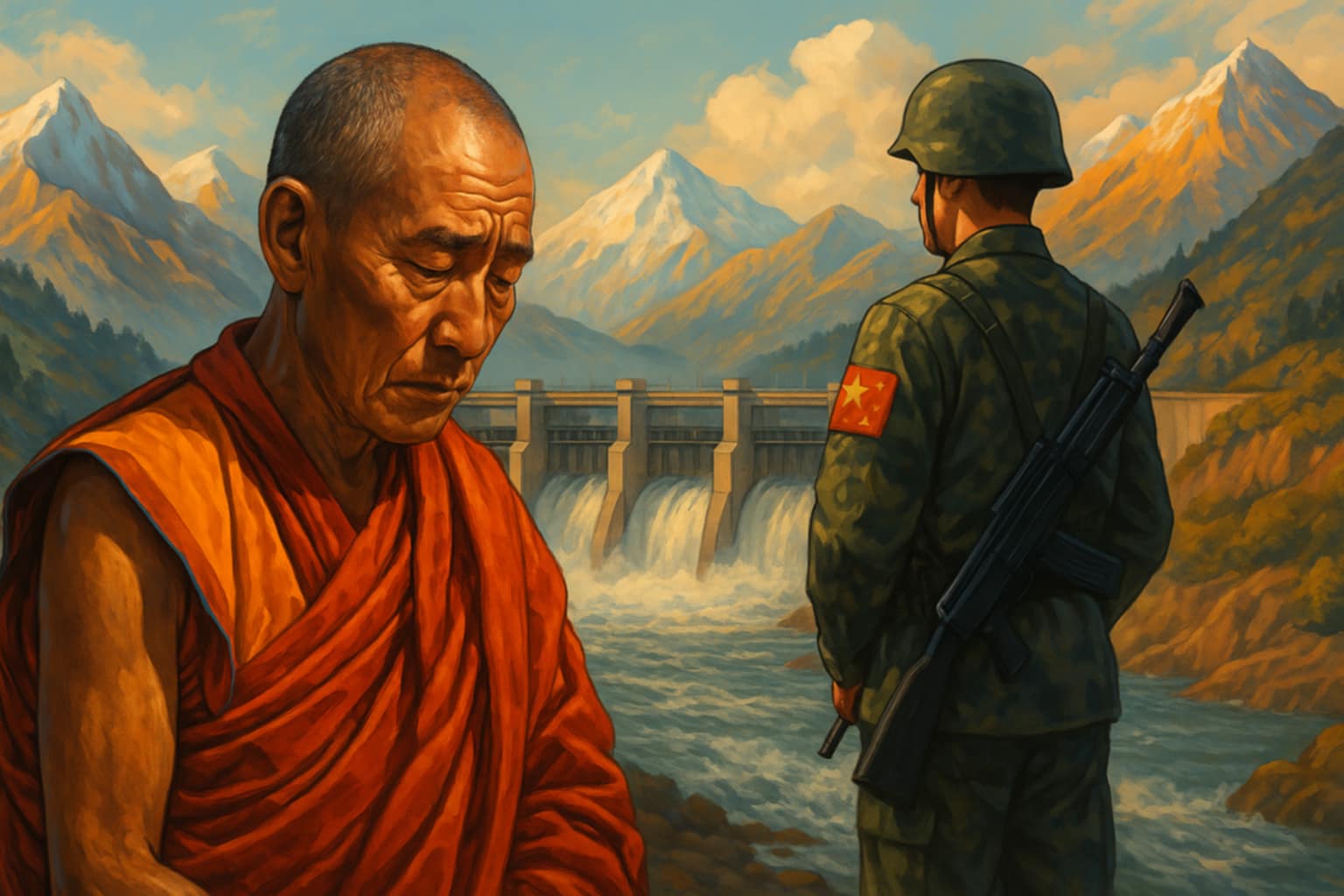China's Hidden War for Tibet's Water

Even as Beijing continues to assert control over the succession of the Dalai Lama, it is also tightening its grip on Tibet’s vast water resources. This dual strategy not only serves China’s domestic needs but also advances its broader plan to dominate the region through geopolitical, environmental, and economic control.
Known as Asia’s "Water Tower," Tibet holds strategic importance for multiple reasons. The Qinghai-Tibet Plateau is a crucial water source—not just for China, but for much of the Asian continent. Its glaciers, snow-capped peaks, and high-altitude geography feed some of the largest river systems in the world, including the Mekong, Yangtze, Indus, and Salween. Altogether, Tibet is the source of 10 major Asian river systems, which flow into as many as 10 different countries, sustaining the livelihoods of over 1.5 billion people.
Since 1950, when China occupied Tibet, it has steadily intensified its extraction of natural resources from the region—including minerals, forests, and most significantly, water. According to Tibet.net, China has been actively constructing dams and other infrastructure to control river flows. These efforts are not solely about hydropower or energy security. They are part of a larger strategy to transform natural resources into instruments of geopolitical leverage.
One important example is the construction of a mega-dam on the Mekong River in 2021. Following its completion, countries downstream—including Myanmar, Laos, Thailand, Cambodia, and Vietnam—witnessed a dramatic 50% reduction in water flow. This led to widespread resentment and mounting fears over regional water security. A U.S. study harshly criticized China for turning the Mekong into an “environmental hell.” Originating in Tibet, the Mekong River sustains more than 60 million people, many of whom rely on it for agriculture, fisheries, and clean water. China’s upstream interference has directly threatened their food security and local economies.
And the Mekong is just the beginning. China is actively building dams on multiple transboundary rivers just before they exit Tibetan territory, thereby controlling the flow into downstream countries. Although Beijing presents these projects as part of its development agenda, they also serve as tools of coercion, allowing China to control when, how much, and to whom water flows.
A recent report by the Center for Strategic and International Studies (CSIS) warns that China is fundamentally redefining infrastructure as a tool of state power.
In Tibet, dams are not merely about hydropower—they are geopolitical weapons. High-speed railways crisscrossing the plateau enable rapid military deployment, while digital infrastructure is used to enforce surveillance and suppress dissent. These are dual-use investments, crafted not only to enhance connectivity and power generation but also to deepen China’s control over contested regions.
By monopolizing the upstream flows of Asia’s major rivers, China gains the ability to manipulate ecosystems and economies downstream. As CSIS notes, the threat of “turning off the tap” could be used to pressure or punish neighboring countries that challenge Beijing’s interests—without firing a single shot.
In December 2024, China approved the construction of the world’s largest hydroelectric dam on the YarlungTsangpo River. With a projected annual capacity of 60 gigawatts—nearly 300 billion kilowatt-hours of electricity—this project, located in the Himalayas, underscores China’s long-term strategy to control Tibet’s rivers for both political and power-generation purposes.
Experts say China’s resource-focused expansionism now extends well beyond Asia, reaching into Africa and Latin America. However, it’s growing obsession with freshwater is casting a shadow over Asia’s future. As demand for water rises, China’s upstream control could destabilize the entire region.
It would not be wrong to say that Tibet’s value to China lies not only in its spiritual or cultural identity but also in its role as a critical source of natural wealth. In a world where water is fast becoming more precious than oil, Beijing’s control over Tibet is unlikely to weaken.The CSIS cautions that the U.S. and its allies must urgently rethink their strategy regarding China’s infrastructure-driven expansionism. For China, this is no longer about connectivity and development—it is about coercion and control. Ignoring China’s strategic use of Tibet’s water could have far-reaching consequences for regional stability and global balance. The time to act is now.




![From Kathmandu to the World: How Excel Students Are Winning Big [Admission Open]](https://www.nepalaaja.com/img/70194/medium/excel-college-info-eng-nep-2342.jpg)
